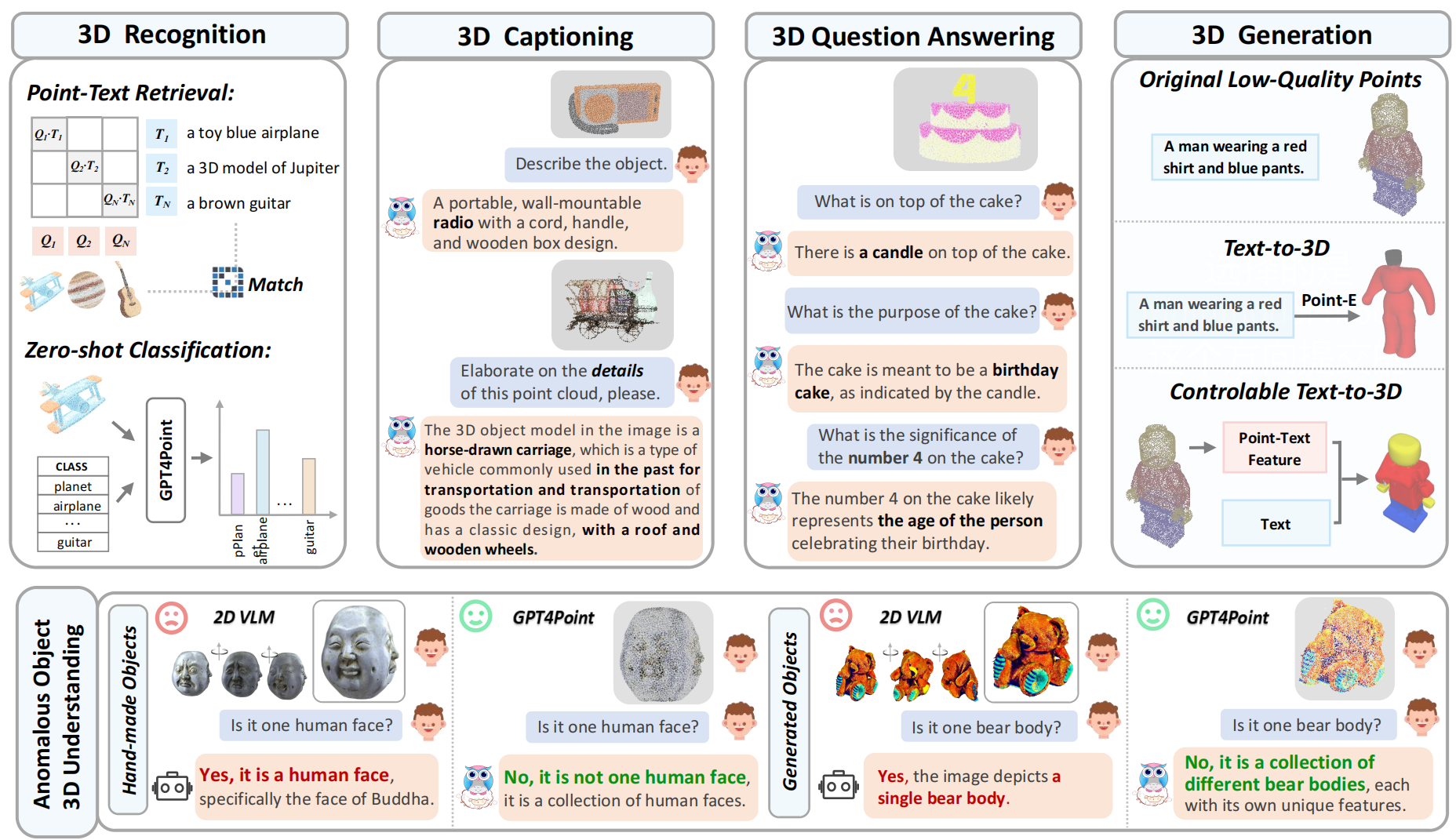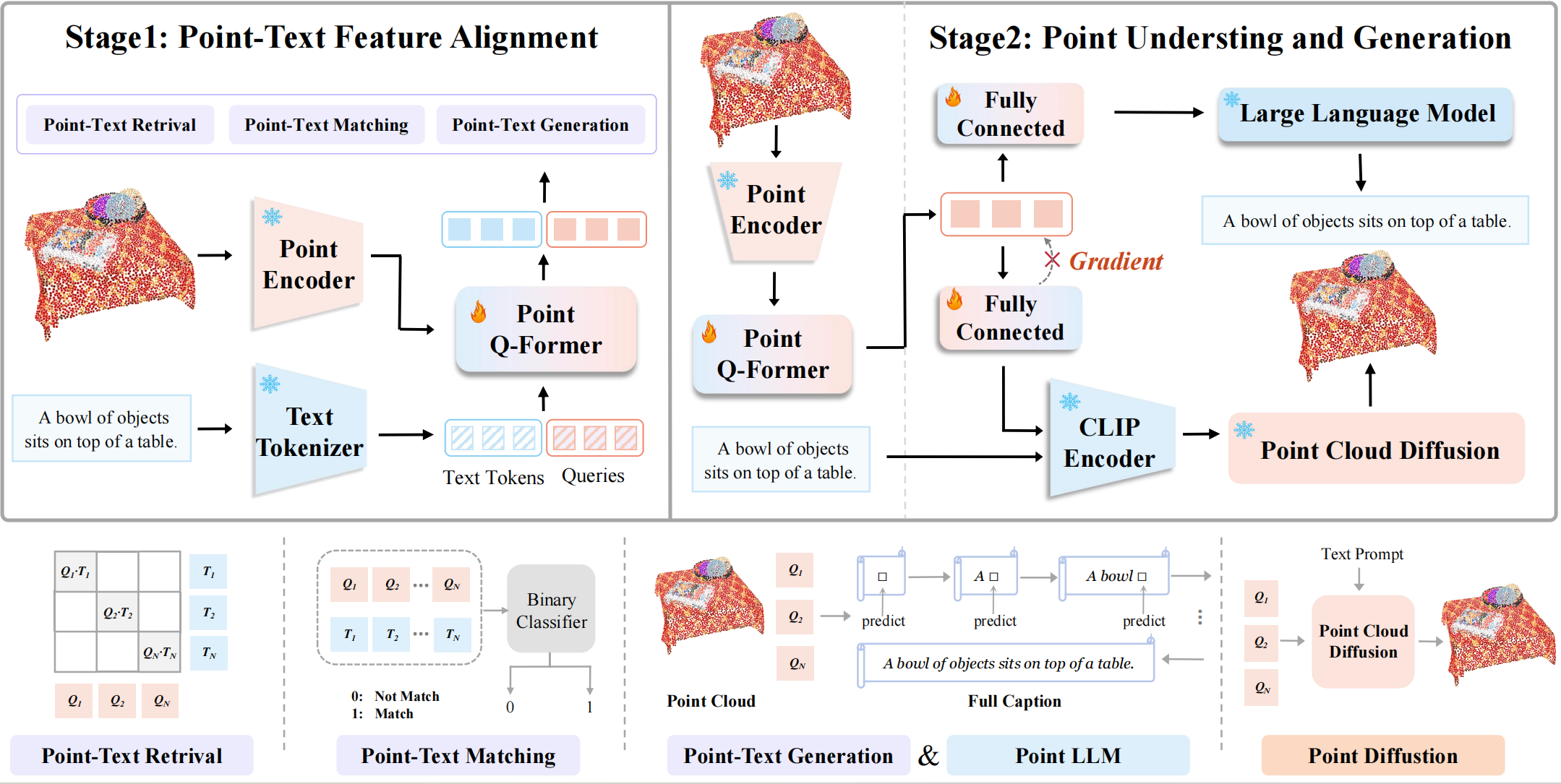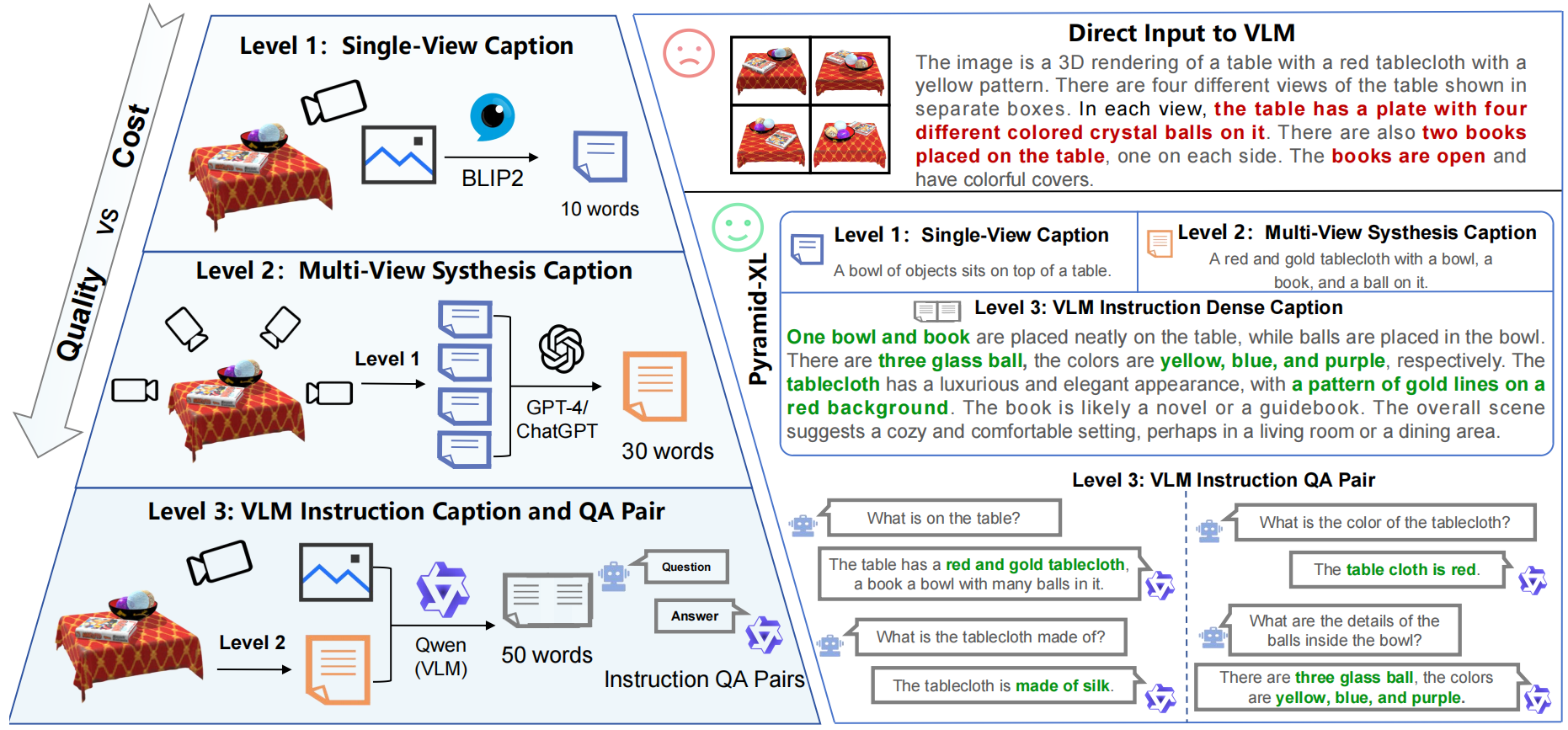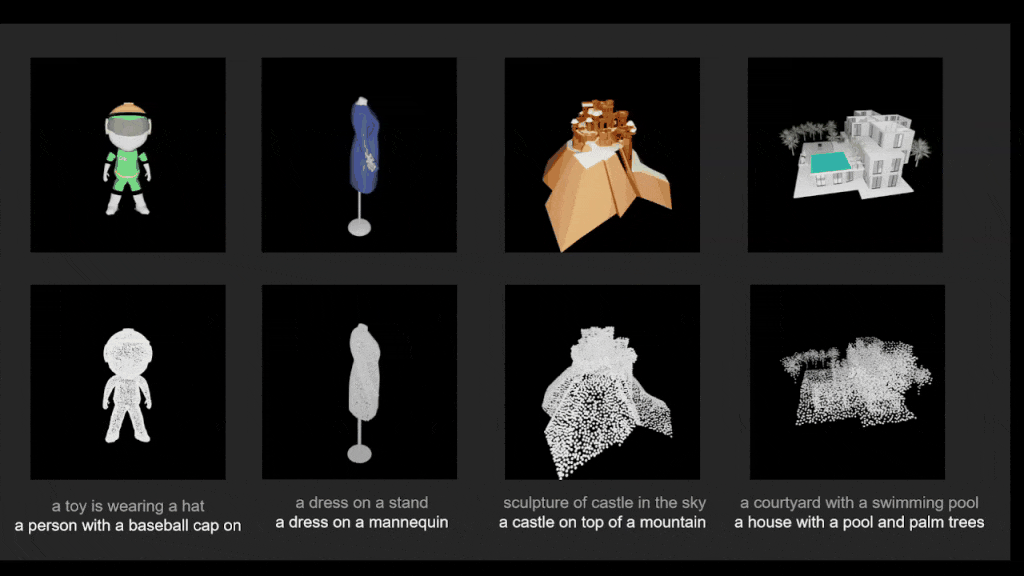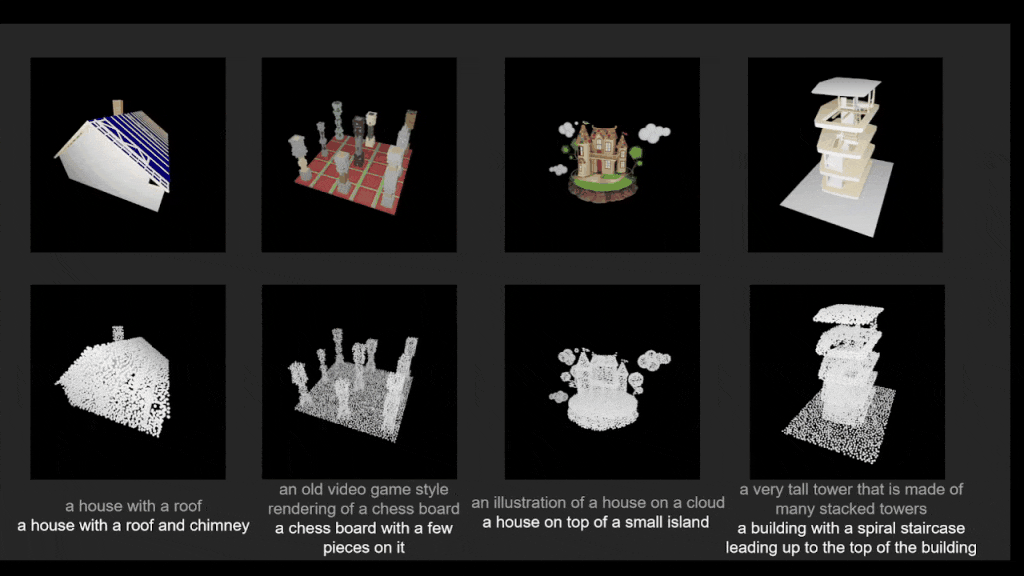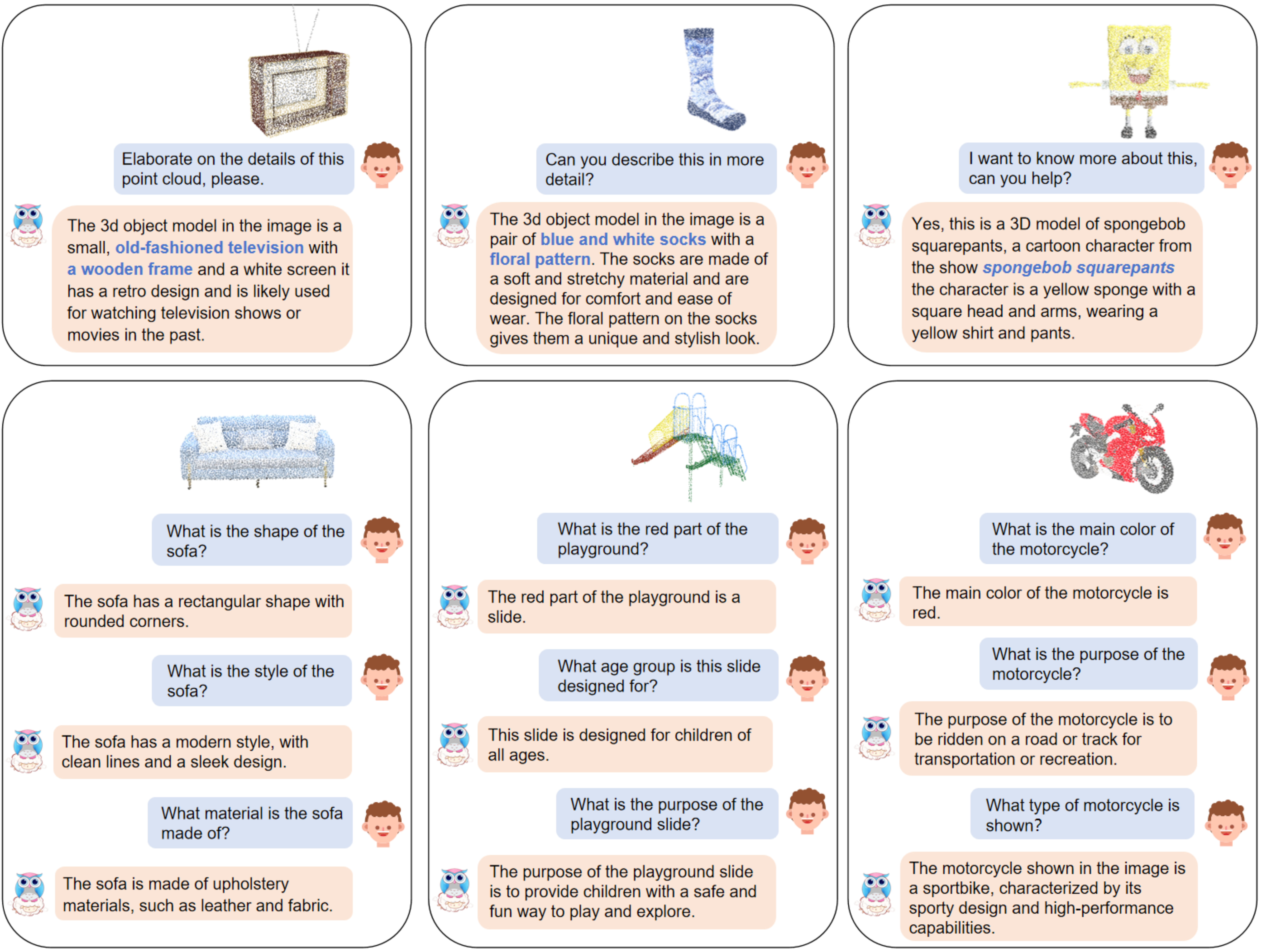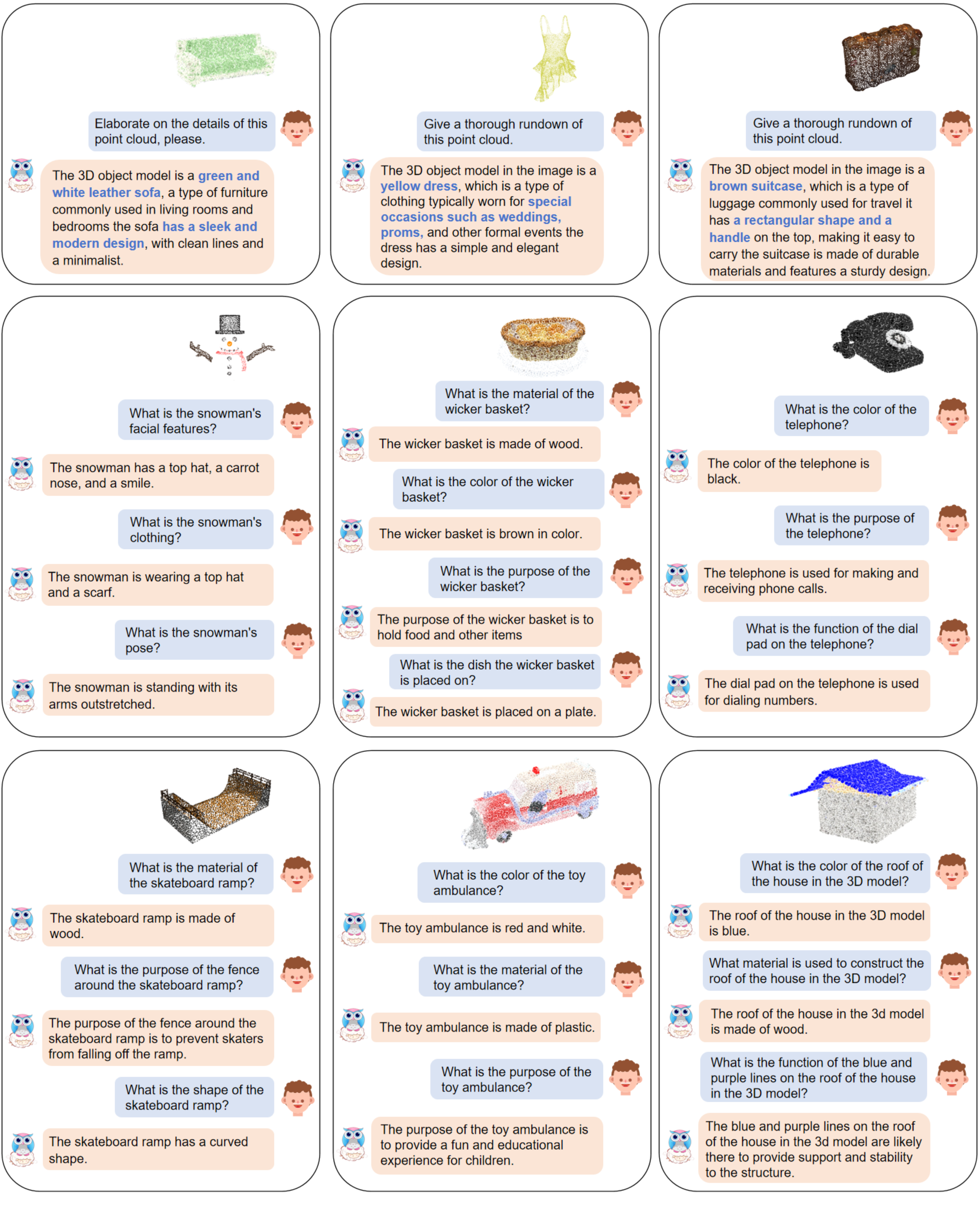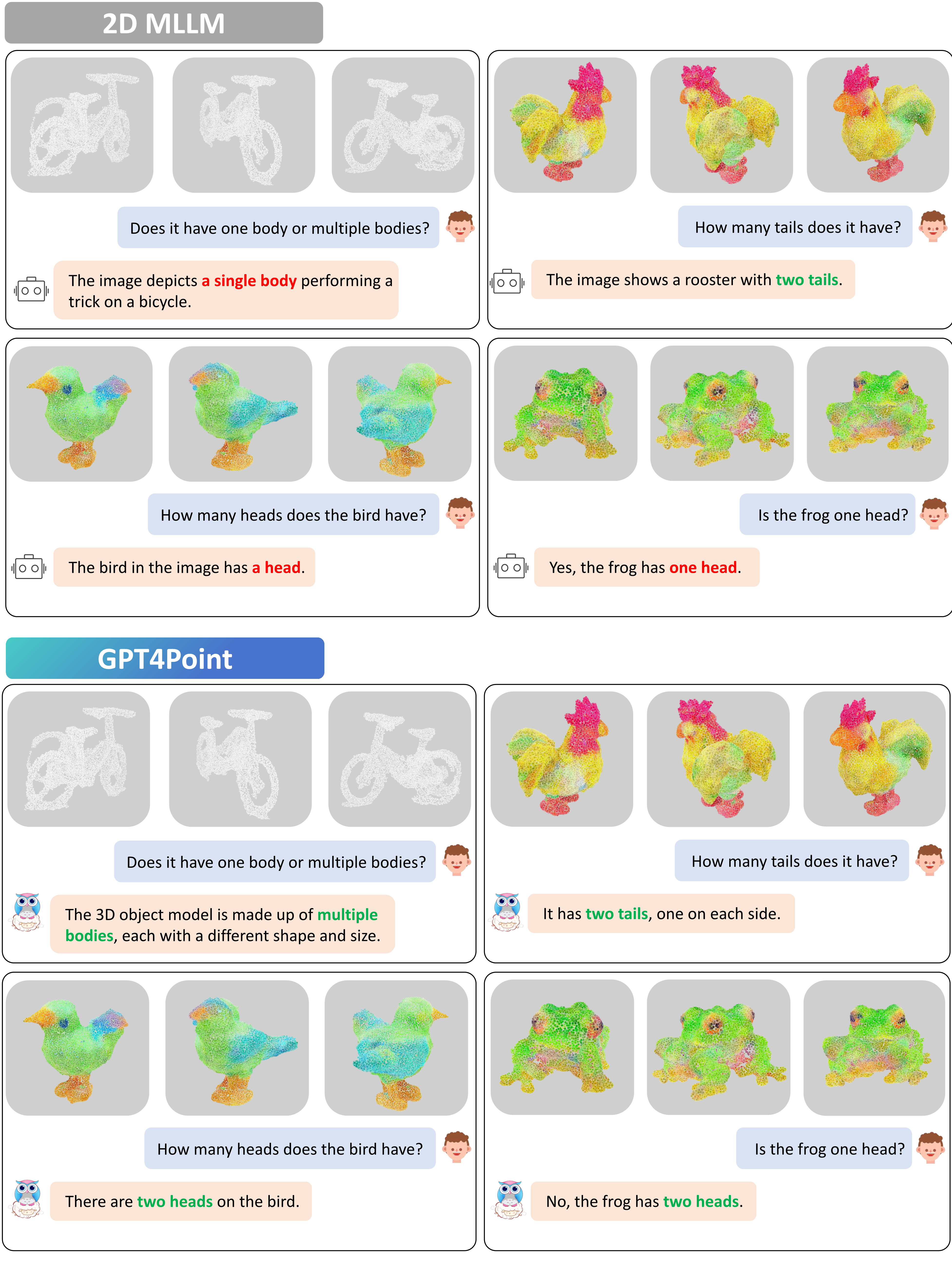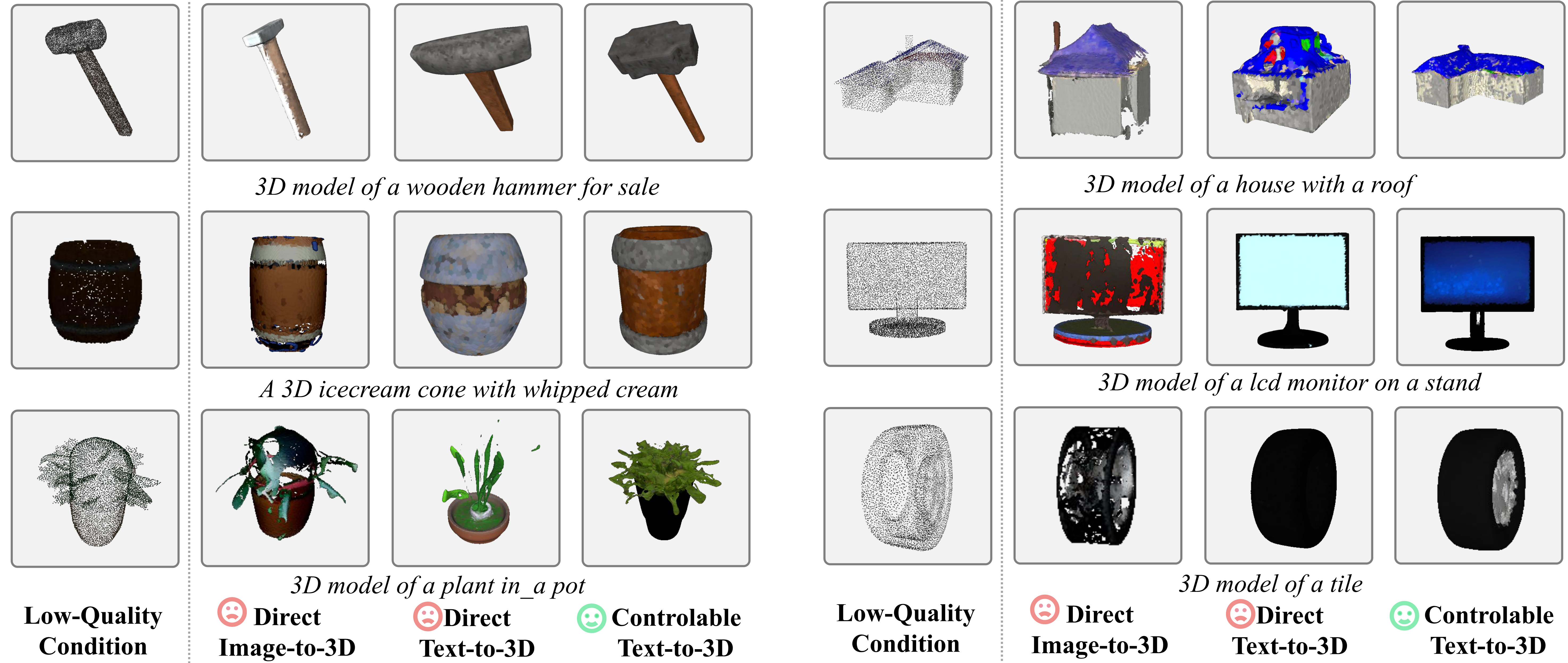🔥 2023/12/05: The paper GPT4Point (arxiv) has been released, we unified the Point-language Understanding and Generation.
🔥 2023/08/13: Two-stage Pre-training code of PointBLIP has been released.
🔥 2023/08/13: Part of datasets used and result files has been uploaded.
This project presents GPT4Point ![]() , a 3D multi-modality model that aligns 3D point clouds with language. More details are shown in project page.
, a 3D multi-modality model that aligns 3D point clouds with language. More details are shown in project page.
-
Unified Framework for Point-language Understanding and Generation. We present the unified framework for point-language understanding and generation GPT4Point, including the 3D MLLM for point-text tasks and controlled 3D generation.
-
Automated Point-language Dataset Annotation Engine Pyramid-XL. We introduce the automated point-language dataset annotation engine Pyramid-XL based on Objaverse-XL, currently encompassing 1M pairs of varying levels of coarseness and can be extended cost-effectively.
-
Object-level Point Cloud Benchmark. Establishing a novel object-level point cloud benchmark with comprehensive evaluation metrics for 3D point cloud language tasks. This benchmark thoroughly assesses models' understanding capabilities and facilitates the evaluation of generated 3D objects.
The model architecture of GPT4Point for training. In Stage1, we employ a Bert-based Point-Q-Former for point-text feature alignment through three point-text tasks. Then, in Stage2, an LLM is appended to train the model's text inference capabilities. A Point Cloud Diffusion is attached separately to train controlled text-to-3D generation which keeps the geometry shape and colors.
Pyramid-XL: An automated point-text annotation engine. Directly inputting images into VLMs yields unsatisfactory results. We propose a progressive annotation approach with 3 levels of granularity, leveraging results from the previous level for precise outcomes.Given the input of a 3D point cloud, the caption generated by our GPT4Point can better reflect the structural features, orientation and more details of the object.
These demo shows the 3D captions of objects in the Objaverse.
- The first line is the mesh of the objects. The second line is the point cloud of them without the color.
- Grey captions. are generated by the BLIP when provided with a view of object images.
- White captions are generated by the GPT4Point when provided with only the point clouds.
Observably, the white captions exhibit a greater capacity to convey intricate details concerning the objects' geometrical attributes.
Examples of text inference using the GPT4Point with ViT-g and OPT6.7B after Instruct Finetuning. The table showcases its proficiency with point cloud input, excelling in tasks like detailed caption generation and point cloud-bas question answering. This underscores our model's profound grasp of point cloud geometry and color, translating them into meaningful semantics.
Anomalous Objects: Generation Failure Cases. The upper and lower parts respectively depict the performance of 2D MLLM and GPT4Point in identifying abnormally generated objects with multi-body and multi-head structures. GPT4Point is effective in making accurate judgments, whereas 2D MLLM, due to the lack of information from single-view images, fails to identify most cases.
Point Diffusion Results: our controllable text-to-3DGiven a low-quality point cloud prior, it can generate outcomes superior to direct text-to-3D and image-to-3D methods and more closely align with the low-quality priors, demonstrating controllability.
- [✔] Release the arxiv and the project page.
- Release dataset and data engine.
- Add inferencing codes with checkpoints.
- Add Huggingface Demo🤗.
- Add training codes.
- Add evaluation codes.
- Add gradio demo codes.
If you find our work helpful, please cite:
@misc{qi2023gpt4point,
title={GPT4Point: A Unified Framework for Point-Language Understanding and Generation},
author={Zhangyang Qi and Ye Fang and Zeyi Sun and Xiaoyang Wu and Tong Wu and Jiaqi Wang and Dahua Lin and Hengshuang Zhao},
year={2023},
eprint={2312.02980},
archivePrefix={arXiv},
primaryClass={cs.CV}
}
This work is under the Creative Commons Attribution-NonCommercial-ShareAlike 4.0 International License.
Together, Let's make LLM for 3D great!
- Point-Bind & Point-LLM: It aligns point clouds with Image-Bind to reason multi-modality input without 3D-instruction data training.
- 3D-LLM: employs 2D foundation models to encode multi-view images of 3D point clouds.
- PointLLM: employs 3D point clouds with LLaVA.



